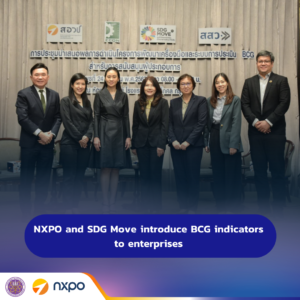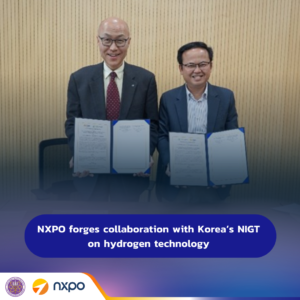On 20 November 2023, the Senate Standing Committee on Poverty and Inequality Reduction organized an event at the Government House, focusing on poverty alleviation in Thailand. The co-organizers included the Ministry of Higher Education, Science, Research and Innovation (MHESI), the Ministry of Interior, the Office of the National Economic and Social Development Council, the National Village and Urban Community Fund Office, and Rotary Thailand.

The event featured a keynote address by Deputy Prime Minister and Interior Minister Mr. Anutin Charnvirakul, as well as seminars and exhibitions by various organizations. During his keynote address, Mr. Anutin introduced the government’s policy on poverty alleviation as a national agenda. The MHESI exhibition, which highlighted its poverty alleviation initiatives, was presented by MHESI Permanent Secretary Mr. Permsuk Sutchaphiwat, NXPO President Dr. Kitipong Promwong, and representatives from the Program Management Unit on Area Based Development (PMU A) and Thailand Science Research Innovation (TSRI).

The MHESI exhibition focused on the Provincial Poverty Alleviation Platform (PPAP), implemented by PMU A. PPAP comprises five components: a collaborative platform, the Thai People Map and Analytics Platform (TPMAP), a social welfare referral system, poverty alleviation models, and the integration of research and technology into provincial and community development. Five poverty alleviation models were presented:
- Mobile Grocery Model. This model promotes mobile grocery businesses in Buriram province, generating an average household income of THB 13,000 per month.
- Krajood Model. A social enterprise was established in Khuan Khanun district, Phatthalung province, to promote skills in making krajood (grey sedge) craft and online marketing to increase product sales.
- Tali–Ai Model. This model facilitates the development of the social economy in Tali-Ai subdistrict, Pattani province. The model focuses on four components: Tali-Ai Care for promoting health and education, Tali-Ai Creative for promoting handicraft and creative tourism, Tali-Ai Agronomy for promoting agriculture, food and medicinal plants, and Tali-Ai Biz for promoting online marketplaces and community markets.
- Straw Mushroom Model. Training on straw mushroom cultivation was provided to villagers as a strategy to increase their incomes, thereby preventing labor migration.
- Mulberry Model. A training program on mulberry cultivation and product development was implemented in Mukdahan province to enable villagers to increase their incomes.









